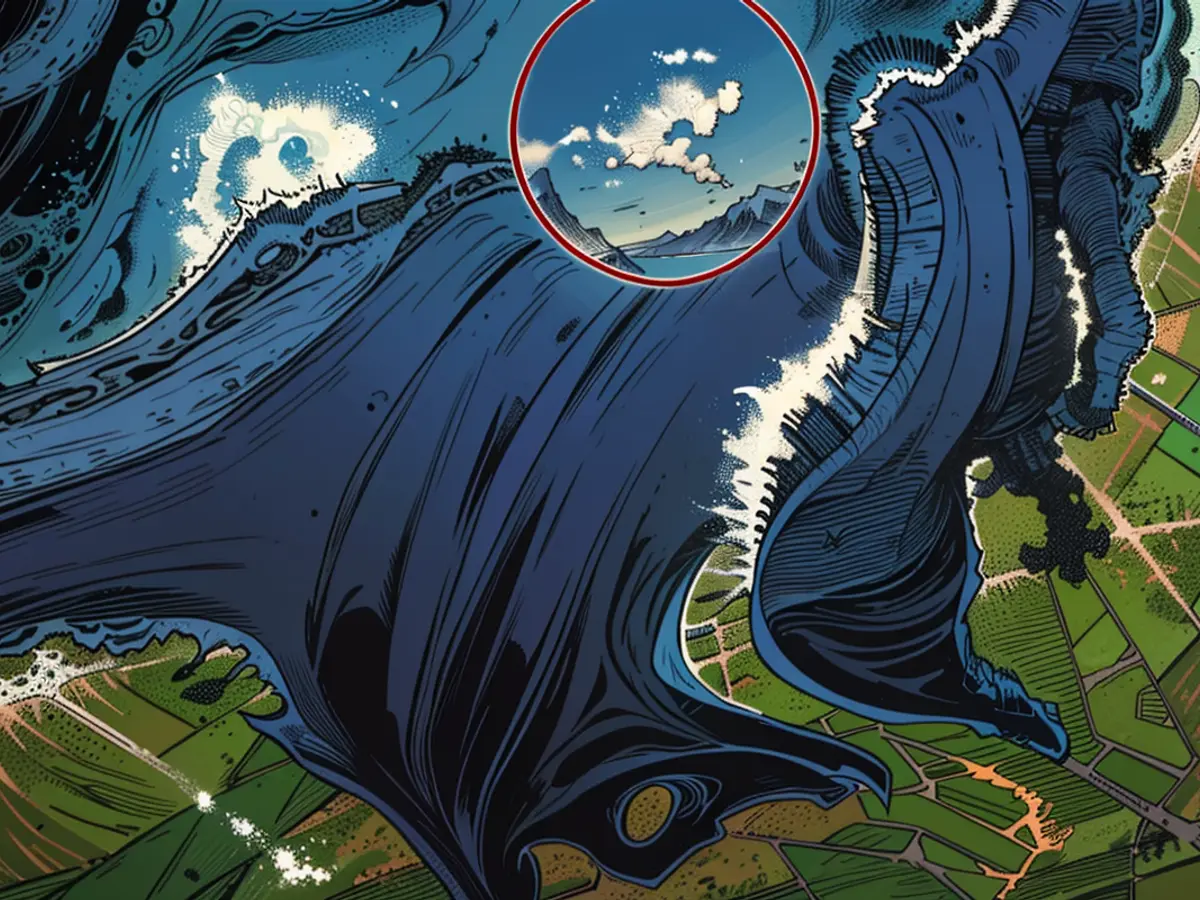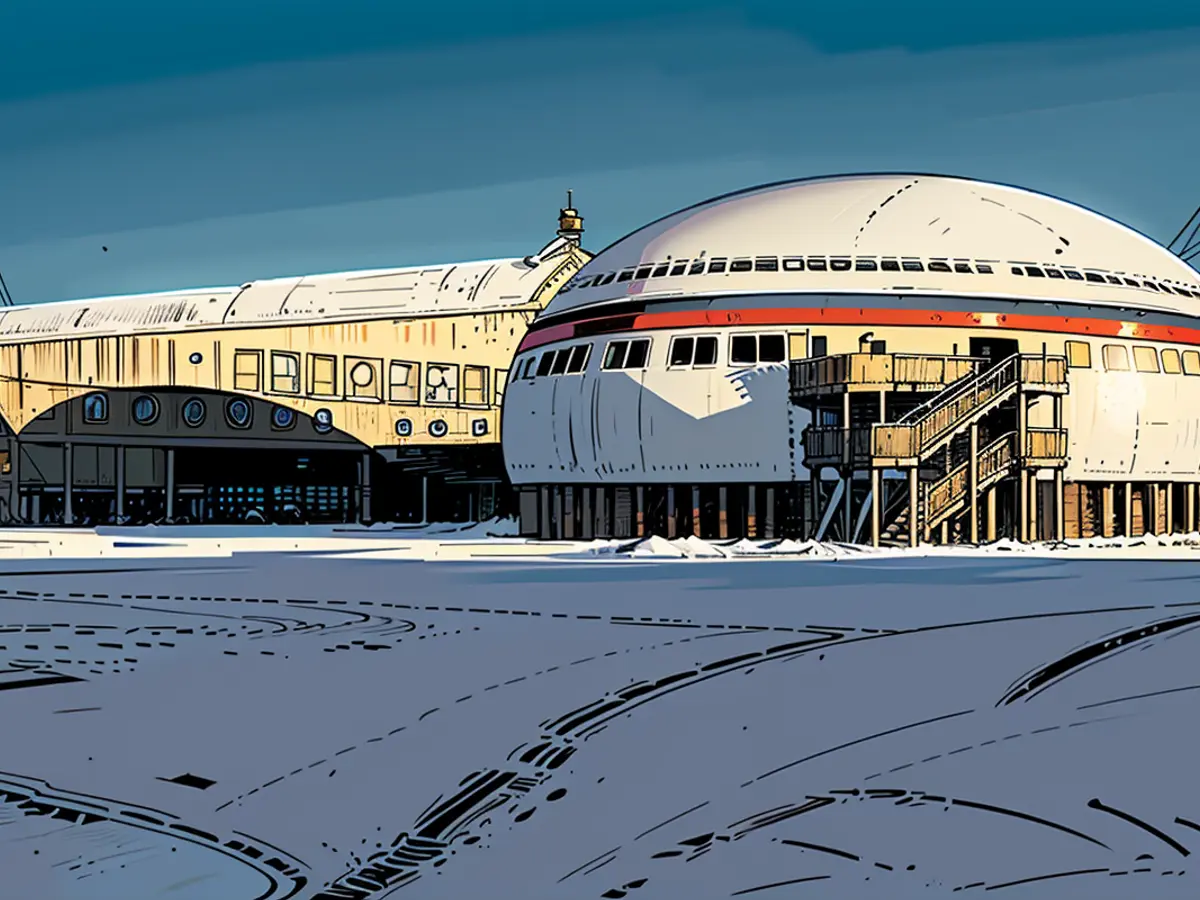In the far-northern regions, the Cold War era has passed.
Harsh weather conditions, ice bergs, freezing temperatures, fog - the Arctic is a challenge even for navy fleets and their crews. However, NATO is interested in increasing its presence in this inhospitable region. In case of a conflict with Russia, the Arctic would be strategically vital. And NATO has a lot of ground to make up in this expansive area.
Russia is a significant player in the Arctic, frequently demonstrating its control. In 2007, Russia planted its flag into the seabed at a depth over 4,000 meters below the North Pole, symbolizing Russian claims to resources beneath the North Pole.
Russia, being the largest coastal state in the Arctic, doesn't want to settle for its 24,000 kilometers of coastline and the resources in the region. In 2019, Foreign Minister Sergei Lavrov declared that the entire Arctic is Russian territory. "It has been known for a long time that this is our land." In 2022, Moscow released its new maritime doctrine, emphasizing that the Arctic holds the highest priority.
Economically, the Arctic is crucial to Russia. Most of Russia's gas and oil are extracted there, and numerous gas and oil fields suspected to be present are yet to be discovered. "Russia, as the largest Arctic state, has been mining resources from Siberia since the 18th century and is now dominant in the gas and oil industry," stated Michael Paul, Arctic expert at the German Institute for International and Security Affairs (SWP), in an interview with Deutsche Welle. "But the Arctic, from Greenland to the Russian Arctic, offers many more resources, from rare earths to diamonds."
Majority of Arctic inhabitants live in Russia
The Arctic sprawls across Alaska, Canada, Greenland, Iceland, Scandinavia, and over two-thirds of Russia's coastline. Approximately 2.5 million out of the total 4 million Arctic inhabitants reside on Russian soil. The four largest Arctic cities are situated in Russia, with the primary port city of Murmansk located on the Kola Peninsula. In the far northwest of the country, the Arctic is most advanced, with modern infrastructure like railway lines, roads, and deep-sea ports. Other parts of the Arctic are mainly accessible via sea and air, with no roads or railway lines, only small harbors and landing strips for aircraft.
The Arctic is a vital military battleground because of NATO and Russia's close proximity. During the Cold War, both factions distrusted each other for decades and deployed ballistic missile submarines, patrolling beneath the thick ice as a deterrent.
Following the end of the Cold War, the Arctic became less significant due to the absence of a mutual military threat. Russia demilitarized, and maintaining its many military facilities and air bases became too costly post-collapse of the Soviet Union. Only after Russia had recovered and consolidated financially did Moscow gradually resume its presence in the Arctic.
Alexandraland - Russia's northern military outpost
Regular maritime patrols have returned to the Arctic about 20 years ago, including Russian submarines. New military support points have been established, such as on Alexandraland, a part of Franz Josef Land, an uninhabited Russian island group in the Arctic that serves military purposes. "Alexandraland is one of Russia's most significant military complexes. It is the northernmost military outpost of the country and offers crucial military capabilities in the air, at sea, and on land to protect the Kola Peninsula," said a report in the "Guardian" at the beginning of this year.
Over 50 military support points from the Soviet era have been reopened in the Arctic - including 13 air force bases, 10 radar stations, and 20 border posts. Russia has also modernized its Northern Fleet with new submarines capable of firing long-range nuclear weapons.
Recently, Foreign Minister Lavrov declared that Russia is "completely ready" for a conflict with NATO in the Arctic.
GIUK Gap - securing Atlantic access
The importance of military control in the Arctic in case of war is clear from the European Arctic example. The GIUK Gap secures access to the Atlantic. GIUK stands for "Greenland, Iceland, United Kingdom" and refers to the area between the north of the UK and Iceland, as well as Iceland and Greenland. Whoever controls this region controls the strategically important access to the Atlantic and the sea route towards the US East Coast.
NATO is also aware of this and intends to increase its presence in the Arctic. NATO has fallen behind in the region, with Russia holding the dominant military position. "The Arctic has been largely neglected in security policy terms by the West," said expert Michael Paul to the newspaper "Die Welt."
Currently, the US military has just one heavy icebreaker ship for Arctic operations, while Canada and Finland are better equipped. Russia alone has more than 40 such ships and is building more. Given its extensive coastline, this might not come as a surprise, but it could pose problems for NATO in a real-life scenario.
NATO aims to match Russia's presence in the Arctic at the fastest pace possible, and Finland and Sweden joining NATO could aid in this. Currently, six out of the eight Arctic Council member states are already part of NATO, including the USA, Canada, Greenland (represented by Denmark), Iceland, Norway, and Sweden. Finland is about to join this list. The Arctic Council, founded in 1996, facilitates collaboration between Arctic states and indigenous communities in the region. However, no joint meetings have occurred since Russia's hostility towards Ukraine.
Through NATO expansion, collaborative efforts within the Arctic could strengthen in the future. The US has recently agreed with Norway, Sweden, and Finland to allow US troops to utilize military facilities within these Nordic countries. Moreover, the US, Canada, and Finland are keen on collaborating on constructing new icebreakers. NATO aims to portray a united front and increased presence in the Arctic to Russia in the future.
This message was also conveyed during the massive NATO exercise "Nordic Response" held at the beginning of the year. Approximately 20,000 soldiers from 13 countries participated in the exercise as a component of NATO's "Steadfast Defender" exercise. A hypothetical Russian attack on Norway was simulated during this exercise.
Partnership with China
Russia is not alone in the Arctic, as it's increasingly collaborating with China. According to the Center for European Policy Analysis (CEPA), the focus is on exploiting resources and developing trade routes. The Northern Sea Route, connecting Northern Europe to Asia, is of interest, traveling from Murmansk along the Russian coast to the Bering Strait off Alaska. It's the shortest but most perilous route from Europe to Asia due to environmental conditions. However, due to climate change, the route is now ice-free for a longer period each year, making it navigable.
Russia regards the route as its territory, requiring shipping companies to acquire permission at least 45 days in advance if they intend to use the route. This, in turn, makes the route less appealing for Western ships, given that it's nearly exclusively used by Russian ships since the Ukraine conflict. The 45-day rule further intensifies the conflict, since it violates the principle of navigational freedom, as the German Institute for International and Security Affairs noted four years ago.
Measures such as these and the overall geopolitical climate have prompted NATO to increase its involvement in the Arctic. The Cold War-like tension between Russia and the West has resurfaced in this inhospitable region, albeit with higher risks due to communication challenges and extreme weather conditions.
The Commission, being a part of NATO, is closely monitoring the increasing military presence and territorial claims of Russia in the Arctic. In response to Moscow's declaration that the entire Arctic is Russian territory in 2019, The Commission has been assessing potential strategies to maintain a balance of power and promote cooperation in the region.
Given the strategic importance of the GIUK Gap for securing Atlantic access, The Commission is considering strengthening its presence and collaborations in this region, as Russia and China's activities in the Arctic pose a significant challenge to NATO's interests.









